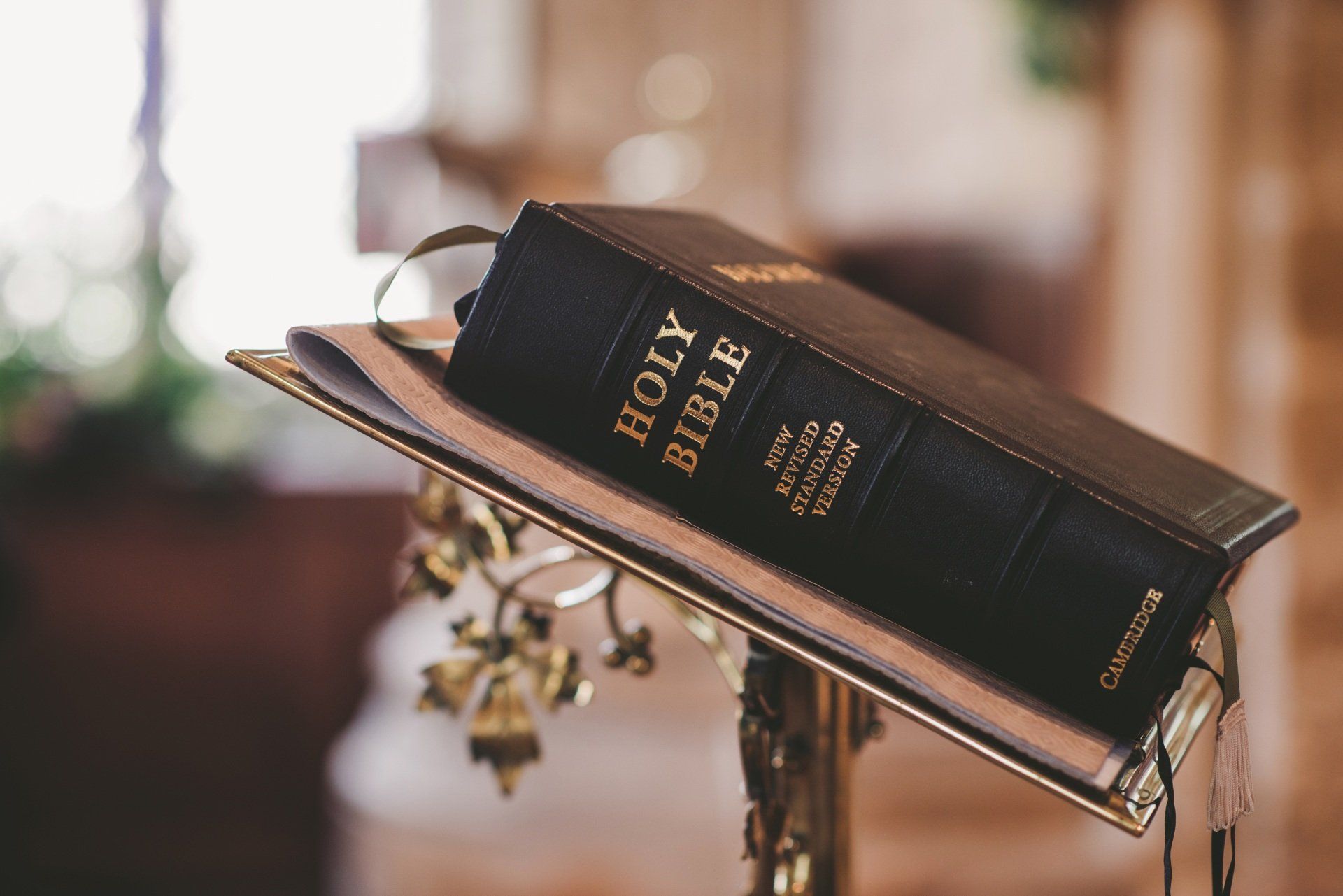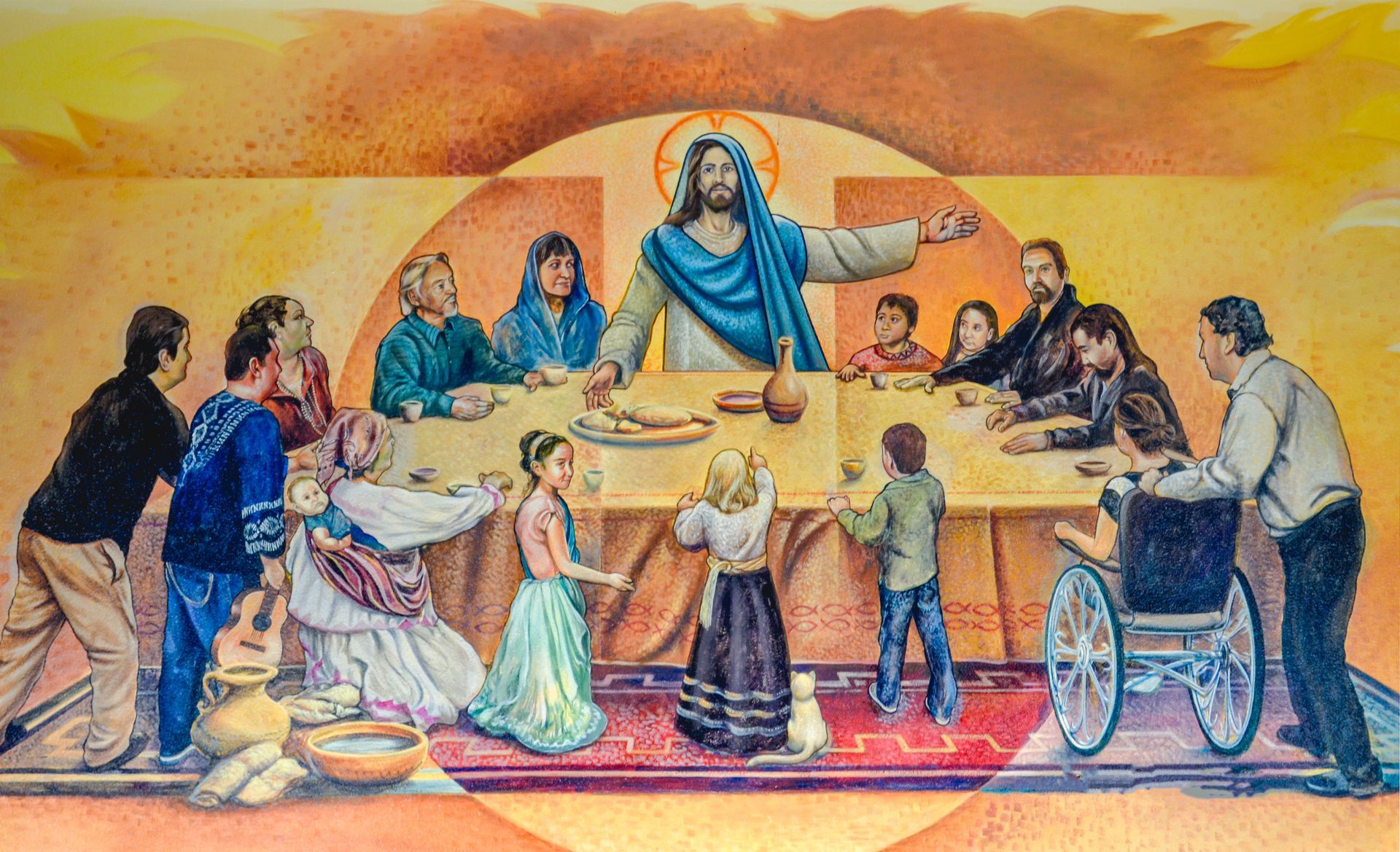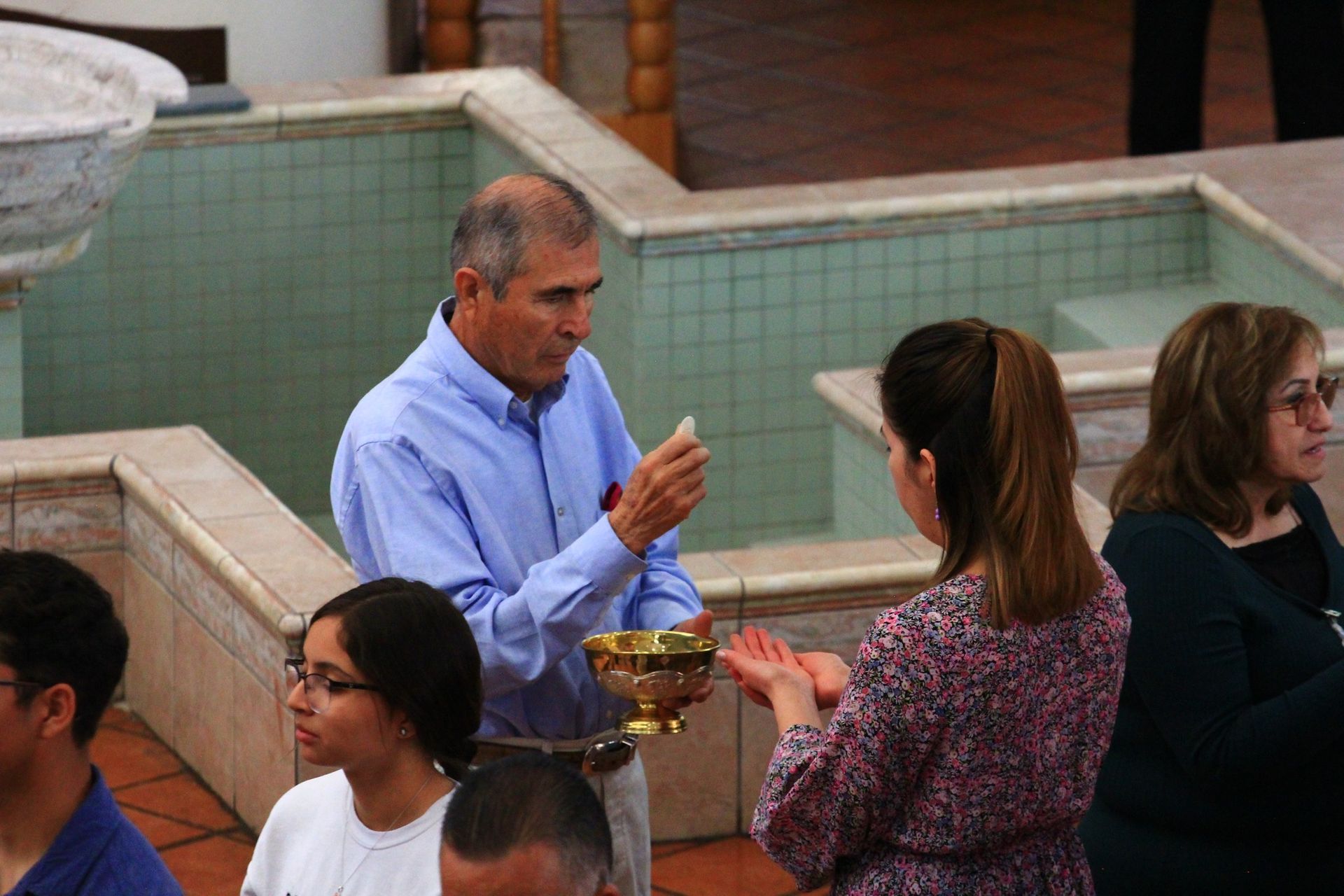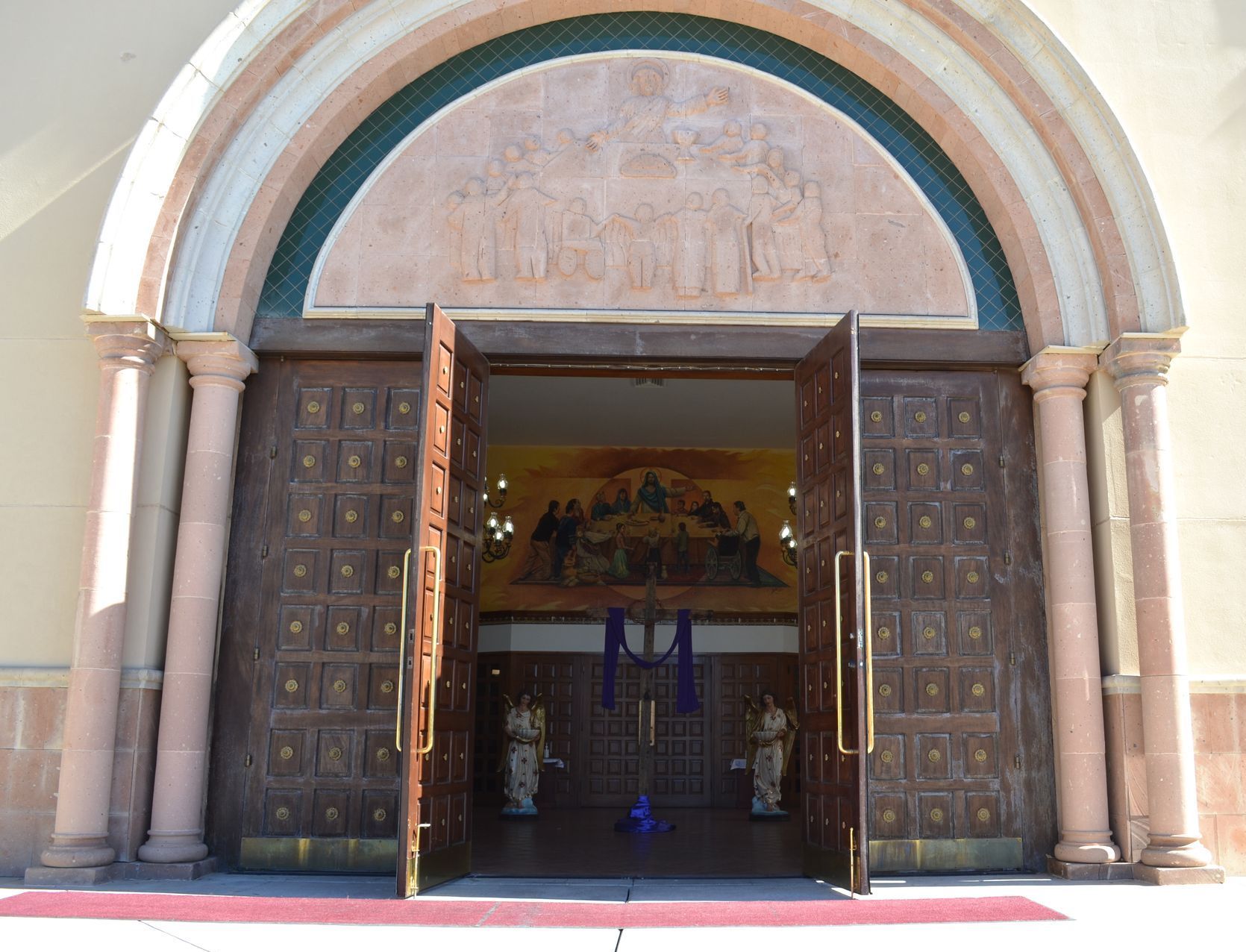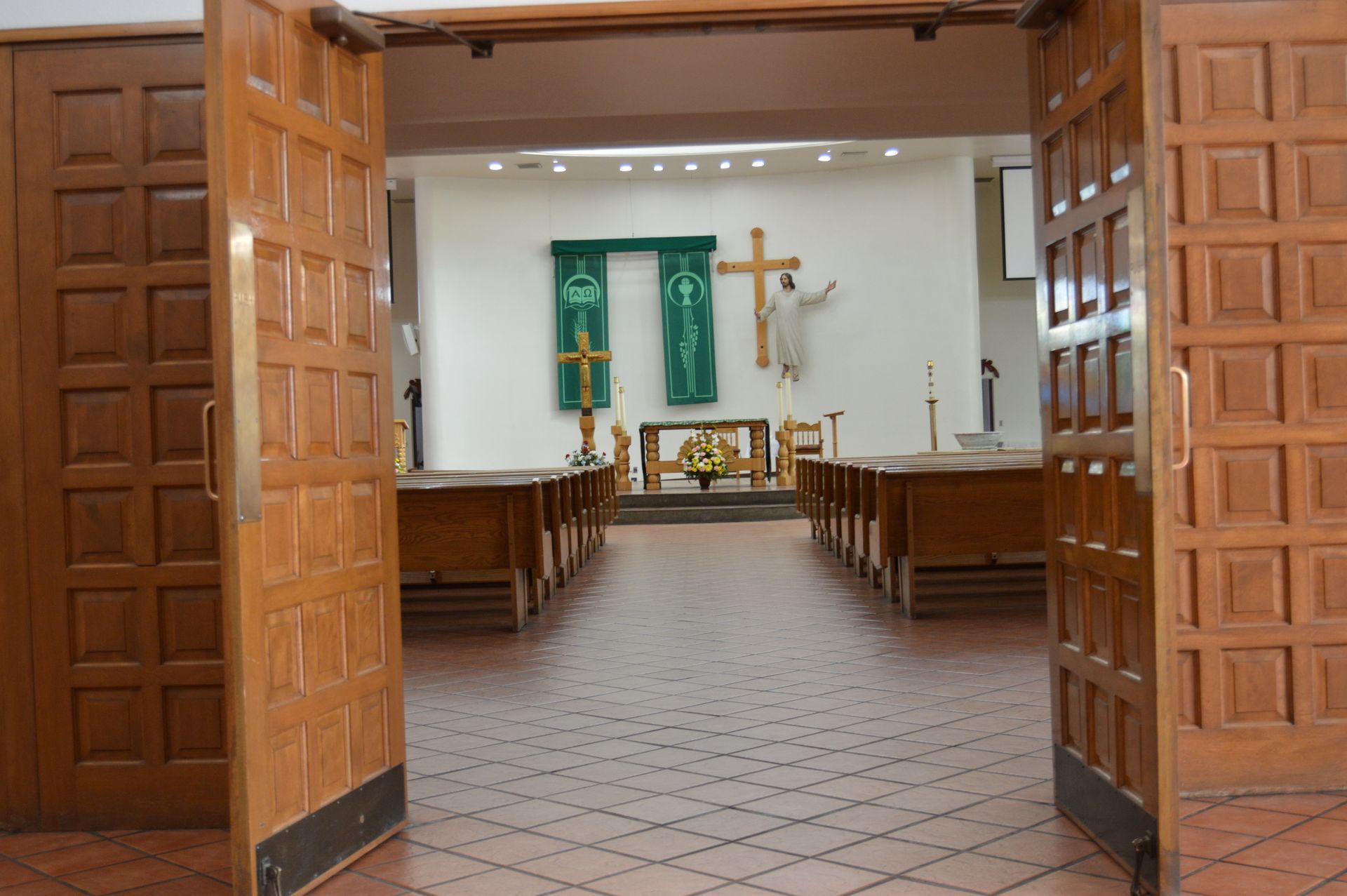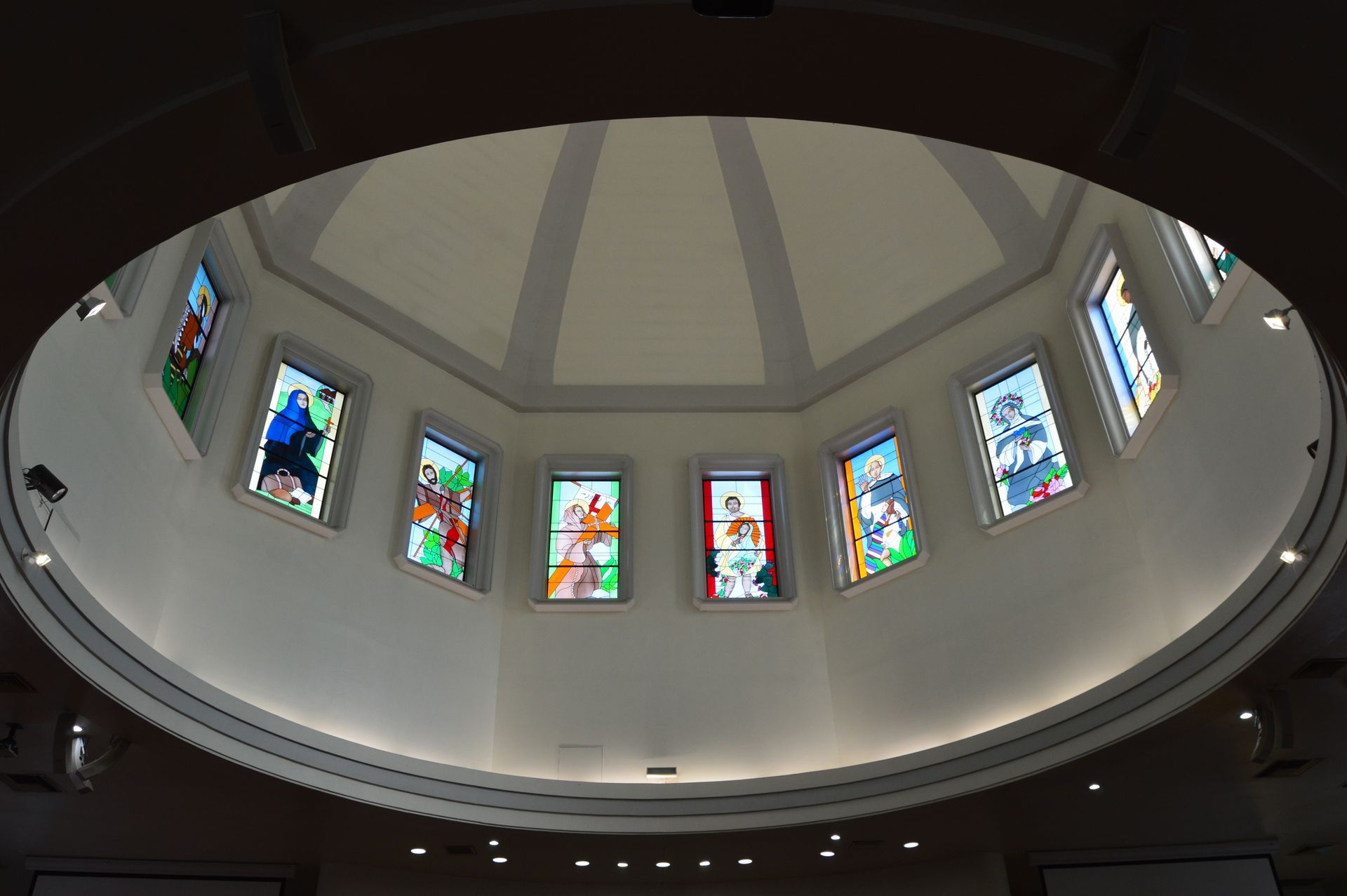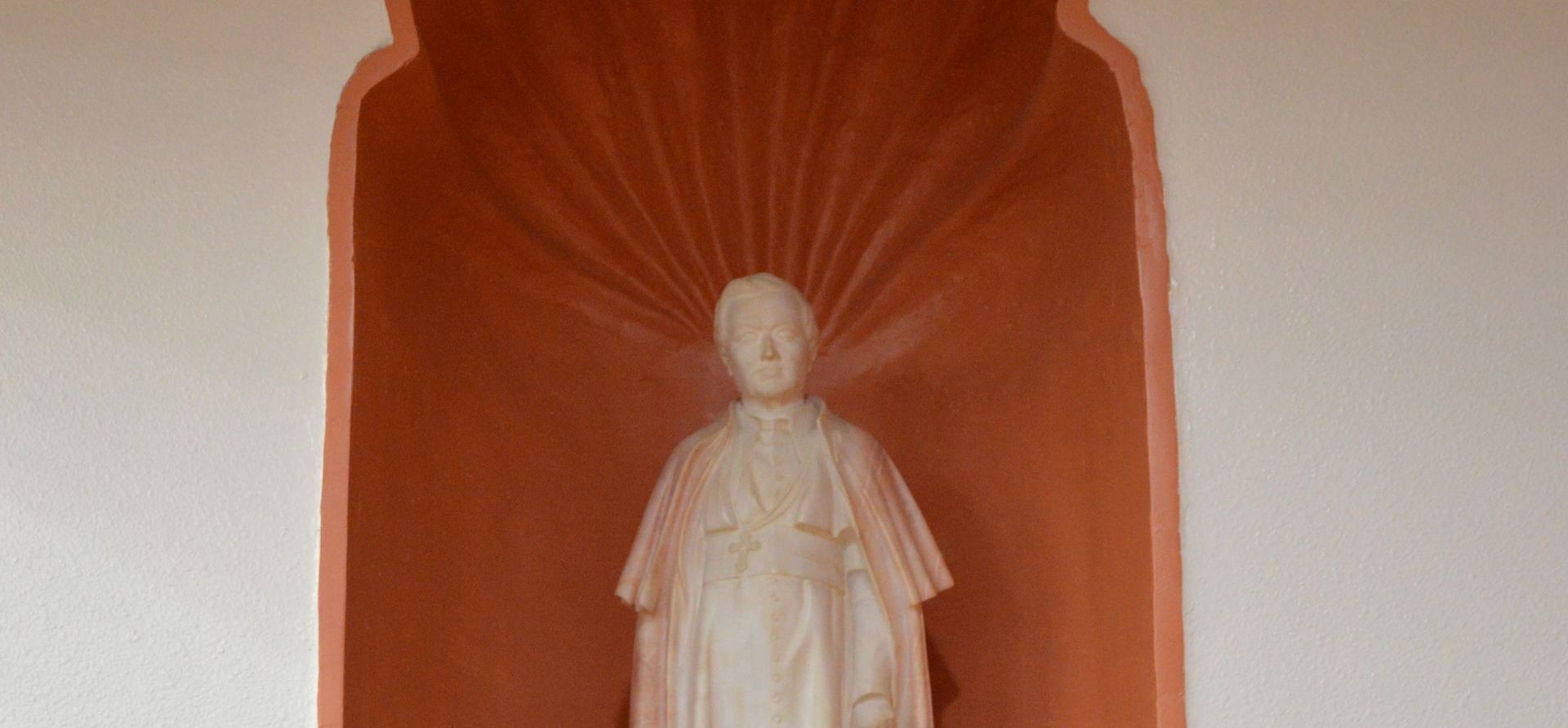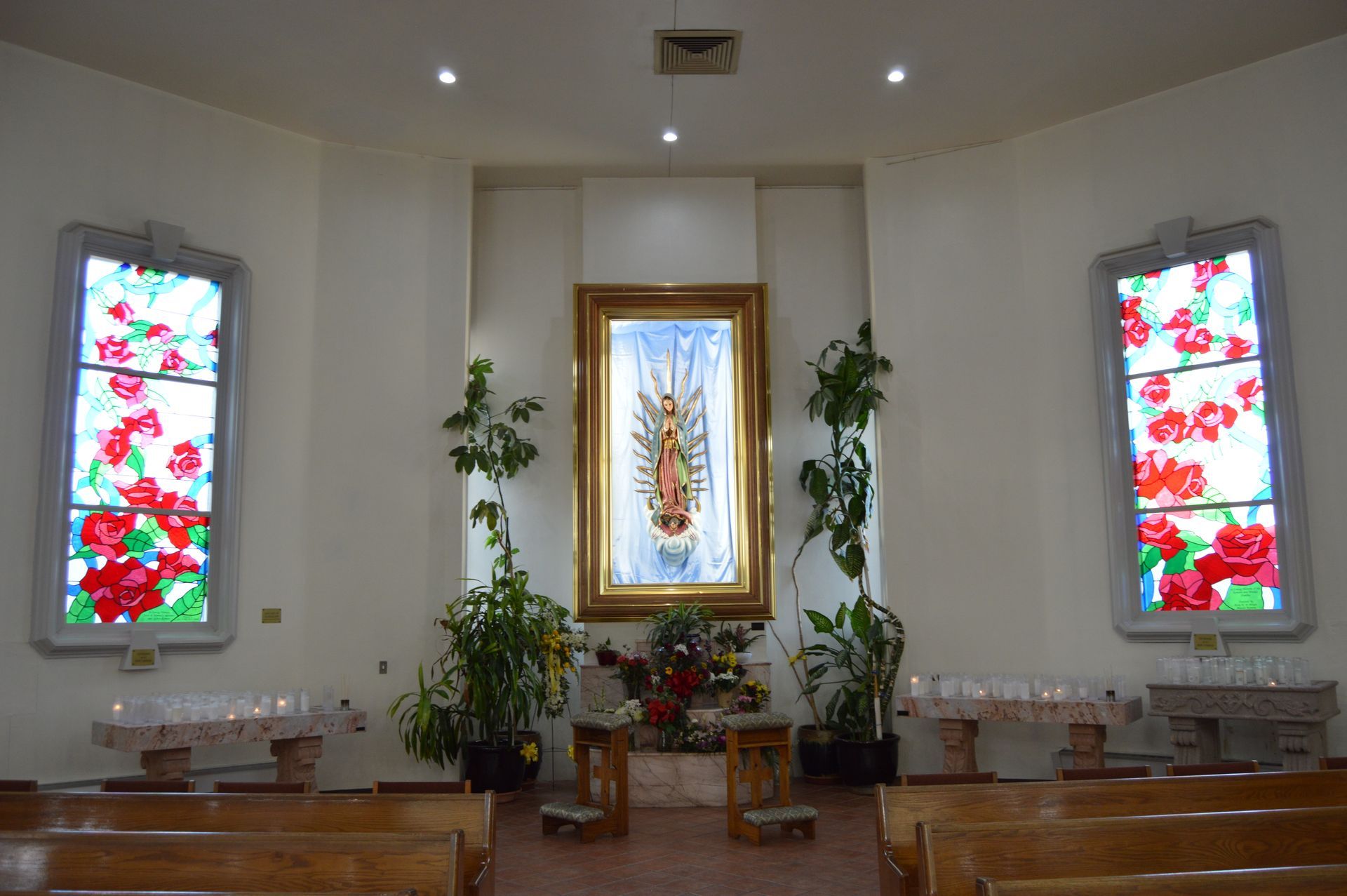Church Sanctuary
Architecture
The Church is shaped in cruciform, with the altar at the heart of the church and the separate Blessed Sacrament reservation chapel at the head of the church.
The liturgical setting emphasizes Christ's presence in the assembly as it gathers around the altar, in the Word, in the ministers, and in the consecrated bread and wine. It invites the assembly to participate fully.
Arrangement
The pews' circular arrangements point to Christ's presence in the assembly gathered to worship. The pulpit, made to resemble the altar, shows the unity of the two and highlights Christ's presence in the Word.
Our large Sanctuary enables various liturgical services, liturgical gestures, and dramas. Local artisans made the altar, pulpit, and other liturgical furnishings.
Resurrected Christ
It has a shadow of the Cross behind it and summarizes the parish logo of communion and mission. With the right hand, Christ welcomes us around the communion table and, with the other outstretched arm, sends the community forth on its mission of fostering the reign of God. The image hangs in the air suspended from the wall, giving the impression of the vitality of the living God in our midst.
Consecration of the Church
Every church must be consecrated. It is a very solemn ceremony, which denotes the building to be exculsively for sacred use. Consecration is reserved to a bishop.
Part of the consecration is that at least one fixed altar must be consecrated, before the consecration the relics were placed in the altar. During the consecration candles under the crosses on the walls are lit.
Bishop anoints the 12 crosses on the inner walls of the church with Sacred Chrism and the altar is also anointed with Chrism. You can still see the chrism on the crosses.
Baptismal Font
Jesus tells his disciples that they are to go and teach all nations, baptizing them in the name of the Father, and of the Son, and of the Holy Spirit (Mt. 28:18-20).
During the Easter Vigil, the Catechumens walk into the baptismal font, are baptized, and walk out toward the altar. Symbolizing that as they enter into the baptismal font, they enter with Jesus in the tomb, they die to sin. As they walk out, they walk toward Jesus into eternal life. As explained in the letter of Paul to the Romans (Rm. 6:3-11).
For children under 7, the smaller basin of the font is used.
Communion of Saints
Like the rest of the church facility, it celebrates our rich spiritual heritage by honoring saints and martyrs from all parts of the Americas.
In the Old Testament, a tent signifies the providential presence of God over the assembly. Later, canopies were built over altars to signify this biblical theme. The dome expresses the desire to reach out to God and God's desire to stretch a providential hand over His people.
The 16 windows in the dome portray a litany of saints and martyrs that give a unique testimony of the spirituality of the Americas that continues to influence our lives today. While we are linked with Western European Christianity, we also draw profound inspiration from our spiritual heritage in the Americas.
Sacred Heart
Jesus appeared to St. Margaret Mary revealing His Divine Heart to her. In one apparition He told her, “My Divine Heart is so passionately in love with humanity, and with you in particular, that it cannot keep back the pent-up flames of its burning charity any longer. They must burst out through you.”
The Holy See has given this devotion a high place of importance in the Church due not only to the requests of Jesus to St. Margaret Mary but also to the soundness of the doctrine and its timeliness in rekindling love and trust in the Merciful Heart of Our Savior.
St. Joseph
St. Jospeh had an incredible vocation. To be chosen to be the foster-father of the God-man, and the spouse of the Virginal Mother of God, are signs of an incredibly exalted vocation.
Devotion to St Joseph has become very widespread in Catholic circles.
St. Joseph is known by several titles which can be found in the Litany of St. Joseph. Some of them are Light of Patriarchs, Chaste guardian of the Virgin, Diligent protector of Christ, Head of the Holy Family, Mirror of patience, Hope of the sick, Terror of demons and Protector of Holy Church.
Mary Undoer of Knots
The story goes that in the 17th century, a German couple (Wolfgang and Sophie) on the verge of divorce prayed for Mary’s intercession to untie and smooth all the knots that were causing turmoil in their marriage; when, after 28 days of prayer, their marriage was healed.
The painting depicts the Virgin Mary as she is untying the knots of the ribbon of married life. The crushing of the serpent illustrates that Mary is the Immaculate Conception, since she as the one exempt by special grace from all stain of original sin is the serpent’s eternal opponent. The dove is a reference to Mary as the Bride of the Holy Spirit. Angels assist the Blessed Mother; one presents the knots of our lives to her, while another angel presents the ribbon, freed from knots, to us. Underneath Mary, the worried noble Wolfgang, accompanied by the Archangel Raphael, walks towards a monastery.
The Return of the Prodigal Son
A copy of the orginal oil painting by Rembrandt which is part of the collection of the Hermitage Museum in St. Petersburg.
The painting depicts the moment the prodigal son returns to his father. The biblical parable is found in the Gospel of Luke 15:11-32.
Each confessional has the picture. During the confession we feel the Father's embrace as we come asking for forgiveness.
Our Lady of Sorrows next to the Dead Body of Christ
The image of our Lady depicts her intense suffering and grief during the passion and death our our Lord.
Since Mary knew sorrow, she can identify with us when we deal with tragedies, hardships, and grief. As our loving mother, Mary will intercede for us and bring us comfort.
St. Jude
Medallion: known as "The image of Edessa." King Abgar of Edessa was suffering from a serious illness. He heard of Jesus healing others and called for Jesus to heal him. Jesus pressed his face onto a piece of cloth and gave it to St. Jude to present to King Abjar and so was the king healed.
Flame: represents the Holy Spirit descending upon St. Jude and the other Apostles at Pentecost.
Green: Symbolizes hope and renewal. For this reason he is the Patron of Hope, in difficult and seemingly hopeless times.
St. Anthony of Padua
He was from the Franciscan order and was known to have the gift of preaching. Many great miracles occured during his life. A heretic stated that he would only believe in the real presence of the Body and Blood of Christ if his mule would kneel down and adore the real presence. The owner starved the mule for three days and the day of the test Anthony presented the mule with the host, the starved mule instead of choosing the food he knelt down and adored the Eucharist.
Lily: Symbol of his purity.
Christ Child: Symbolic of a unique mystical experience Anthony had during his life.
People ask for his help to find lost articles. He himself lost a precious book in the monastery. St. Anthony prayed to God and the young man who had taken his book came back to return the book and ask for forgiveness. Since then people ask for his intercession to find their lost articles.
Divine Mercy
Jesus appeared to St. Maria Faustina Kowalska in 1931.
Devotion to the Divine Mercy leads us to greater trust in the Lord. Jesus's passion is the source of our hope, which leads us to invoke the Father for his mercy.
The image depicts two rays that denote Blood and Water. The pale ray stads for the Water which makes the souls righteous. The red ray stands for the Blood which is the life of souls. Both rays originate from Jesus agonized heart when it was pierced opened by the lance on the Cross, the very depth of his tender mercy.
Stations of the Cross
One of the devotions the Church has especially during the Fridays of Lent. It is also known as Sorrowful Way or Way of the Cross.
Traditions says that the Blessed Mother visited daily the scenes of the Lord's passion. It wasn't until 312 AD that Constantine marked the pathway with important stations. Many pilgrims would visit the Way of the Cross as a pilgrimage.
There are 14 stations: (1) Pilate condemns Christ to death, (2) Jesus carries the cross, (3) Jesus falls for the first time, (4) Jesus meets his Mother, (5) Simon of Cyrene helps carry the cross, (6) Veronica wipes the face of Jesus, (7) Jesus falls for the second time, (8) Jesus speaks to the women of Jerusalem, (9) Jesus falls for the third time, (10) Jesus is stripped of his garments, (11) Jesus is nailed to the cross, (12) Jesus dies on the cross, (13) Jesus is taken down from the cross, (14) Jesus is laid in the tomb
The Cross
The window faces East toward a new day. The form of the cross reminds us of the resurrection. In the center of the window is the Spirit in the form of fire over the Bible. The passage from John 10:7 points to Jesus as the gate to life and eternal life.
Jesus Washing Feet
In the sacraments of initiation (Baptism, Confirmation, Eucharist), we are incorporated into the Priesthood of Jesus Christ, whose ministry and mission we share. Jesus came to serve, not to be served, and He is our ministry model.
Children with Jesus
In Jesus' time and many places today, children are considered the lowest members of society and among the most neglected and most needy. This window reminds us of Jesus' compassion, especially with the most neglected among us. Jesus calls us to preferential options with and for the poorest among us.
Healing and Reconciliation
In the sacraments of reconciliation, we are reincorporated into communion with God and the Church. We are healed from our spiritual blindness and feel the loving mercy and embrace of being close to God. These windows are found inside the confessionals.
Choir of Angels
In Isaish 6, he describes a vision of heaven where the angels sing Holy Holy Holy Lord God of Host, Hosanna in the Highest. During the liturgy we join with the Choir of angels and sing in one voice the Holy. Every time we sing in the liturgy we are joined together with the Angelic being with their voices and instruments.
Our Lady of Guadalupe
Our Lady of Guadalupe's beautiful shrine comes from the Basilica in Mexico City. Archeologists discovered a rare rock underneath Tepeyac Hill, from which they made the altar at the Basilica of Guadalupe. They gave our parish several large pieces of this newly discovered rock, which we placed underneath the altar in concrete as the foundation for the new church. We wanted to make this special connection between the Guadalupe events and the construction of our new parish church, which was built in 1993.
